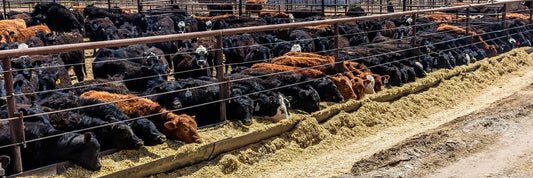What’s On Your Plate? Probably Glyphosate.

In early 1974, the American agrochemical behemoth Monsanto developed and patented a new molecule, glyphosate, and began marketing it for agricultural use. Glyphosate is a powerful broad-spectrum herbicide, or weedkiller. In 1976, Monsanto started commercially branding the chemical Roundup and marketing it to consumers.
As of this writing, a 32-ounce bottle of Roundup 365, which boasts “max control” and promises to kill vegetation for up to 12 months, costs $37.11 on Amazon Prime. Notably, it can’t be purchased by a buyer living in New York. Also notably, as of January 1, 2019, the sale of Roundup has been banned in all of France. Why these limitations? Well, Roundup (and other glyphosate-based herbicides—Monsanto lost the patent in 2000, and many glyphosate-based herbicides began appearing out of China), just might be responsible for some of our most prolific modern health issues, including the rise of celiac disease and chronic inflammation.
Glyphosate Is Everywhere
Since its introduction in the 1970s, glyphosate has been sprayed on most staple crops, including wheat, corn, soy, canola, and even cotton. Maybe you avoid wheat and other grains, but even if you do, if you’re not buying organic, glyphosate is almost definitely finding its way into nearly every single one of your meals. In addition to being used as a weedkiller, glyphosate is a desiccant, or ripening agent, and is applied to just about everything, including beets, apples, carrots, broccoli, almonds, garlic, peaches, apricots, strawberries, tobacco, tomatoes . . . we could go on a long time—more than 70 crops are regularly treated with glyphosate.

Of course, any chemical that kills one plant, i.e. weeds, is also going to be at least somewhat harmful to another plant, including the plant it’s been sprayed on to protect. In 1999, Monsanto introduced genetically modified Roundup-ready seeds—that is to say, crops grown from these seeds would be resistant to Roundup, and thus farmers could spray them with even more Roundup. It’s worth noting that Monsanto’s motivation for introducing these GMOs wasn’t just about creating more robust plants. The company’s patent on glyphosate was about to run out, and introducing seeds that were resistant to Roundup specifically would encourage farmers to purchase Monsanto’s herbicide instead of soon-to-be-introduced competitors (which is why Roundup still accounts for 80 percent of glyphosate-based herbicide sales worldwide, despite the proliferation of such products out of China).
But it’s not just produce that should give you pause. In 2015, researchers found glyphosate residue in six of 40 infant formula samples, and three of 18 breast milk samples. Breast milk samples!Another study found glyphosate in 75 percent of tested rainwater samples. Medical doctor and researcher Zach Bush found an estimated glyphosate level of 10 parts per million in one slice of conventional pizza.
What’s even more astonishing is the amount of glyphosate found in breast milk. Moms Across America found levels as high as 166 ug/L (that’s micrograms per litter) in some samples. That’s 1600 times higher than the levels the EU permits in drinking water. This means that glyphosate isn’t limited to just the crops it’s sprayed on; it’s a pervasive chemical that accumulates in the body after consumption, leading to a host of health problems, including non-hodgkin’s lymphoma, kidney disease, DNA damage, and chronic inflammation.

How Glyphosate Contributes to Chronic Inflammation
While most of the research around the harmful effects of glyphosate has focused on more obviously dire ailments—like cancer, kidney disease, and birth defects—it’s also a potential culprit in two conditions that have seen steady increases in the last few decades: celiac disease and chronic inflammation.
Dr. Zach Bush and his team have done an extensive amount of research into the way glyphosate contributes to these conditions, and the resulting science is alarming.
Epithelial tight junction tissue acts as an internal barrier against a host of environmental toxins, but glyphosate is one toxin it can’t protect against. Glyphosate is a zonulin stimulator—zonulin is a protein that controls the permeability of cell walls—and thus it damages the epithelial tissue immediately upon contact, allowing other toxins to seep in to the blood stream. In the gut, this damage leads to intestinal permeability. In the brain, it can cause the breakdown of the blood-brain barrier, leading to neurological symptoms.
This zonulin-stimulating, tight-junction-damaging process is very similar to the way gluten causes gut damage: the gliadin protein in gluten stimulates zonulin as well, breaking down the tight junction tissues the same way glyphosate does. This reaction is what causes gluten intolerance and celiac disease. Celiac disease, a condition virtually unheard of 50 years ago, now affects an estimated 1 percent of the U.S. population. (One percent may not sound like a lot, but it accounts for over 3 million people.) And research has shown that gluten intolerance affects at least 5 percent of all people, perhaps as high as 10 percent.
How to Avoid Glyphosate
Unfortunately, it seems nearly impossible to completely avoid foods treated with Roundup and other glyphosate-based herbicides (one study found glyphosate in 41 of 69 honey samples, and don’t forget that it’s in our rainwater, too). That said, there are steps you can take to avoid it as much as possible:
- Avoid GMOs. As we’ve discussed, Monsanto began developing GMOs with the sole purpose of making crops more resistant to Roundup. While that’s not necessarily the case for all GMOs today, you can bet that most GMOs you find in the supermarket have been treated with Roundup or other glyphosate-based herbicides.
- Adhere to the Environmental Working Group’s Clean 15 and Dirty Dozen. Every year, the EWG updates this list of foods that have been treated with pesticides. Any of the foods on the dirty dozen list should be purchased organic. While the foods on the clean 15 list have been shown to be relatively free of pesticides, none of them are guaranteed completely pesticide-free, so if you can afford it, buy organic as much as possible.
- Don’t Spray Roundup on your lawn or garden. This one should be obvious, no matter how cheap a bottle is on Amazon. Instead, use vinegar or boiling saltwater as natural weed killers.
- Purchase only grass-fed meat. As we’ve learned, contrary to Monsanto’s claims, glyphosate does bioaccumulate, meaning any animals that have consumed glyphosate likely themselves contain glyphosate. Since traditional feed-lot animals are fed essentially nothing but genetically modified soy, corn, and other grains, they should be avoided (glyphosate isn’t the only reason to avoid grain-fed meat, of course). Purchase only grass-fed, grass-finished beef and free-range chicken to ensure your meals are as glyphosate-free as possible.

Finally, if you’re as upset about the preponderance of glyphosate in our food supply as we are, take action! Share studies on social media, educate others, and call your local politicians to let them know you’re not okay with the big food lobbies having control over what chemicals you consume. Only with education and a voice can we affect change and take back control of our food supply and environment.









